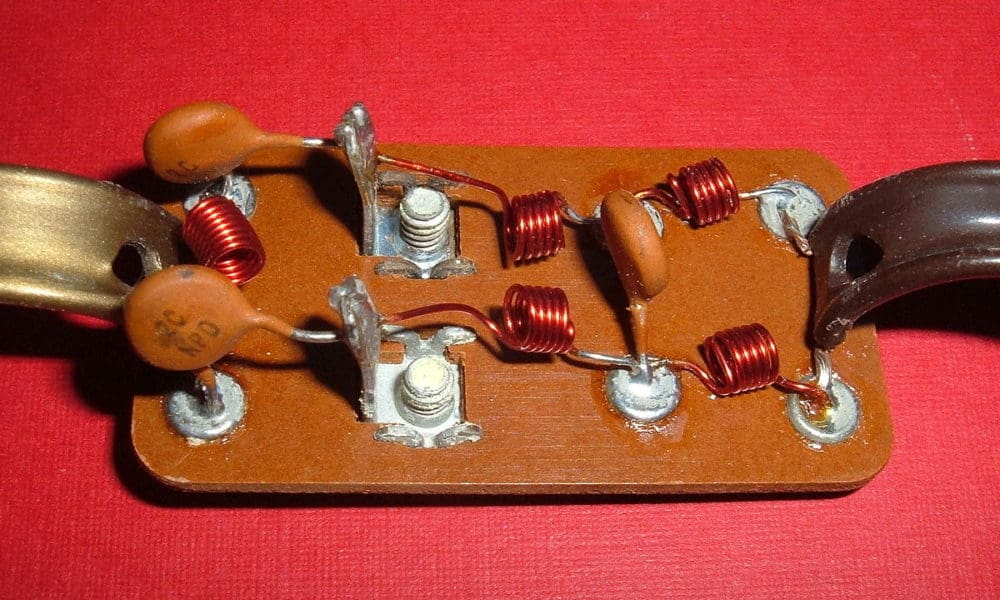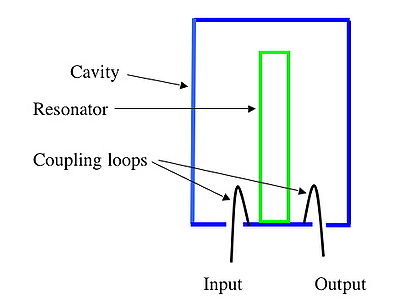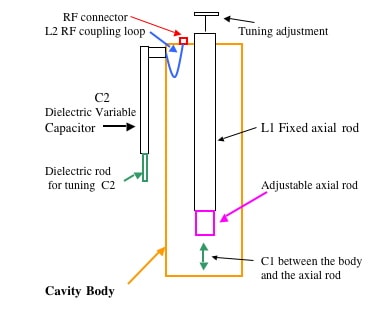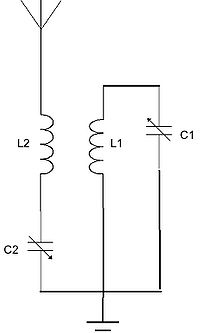Basics of Cavity Filter
Cavity filters are the basic circuitry behind a Duplexer and are sharply tuned resonant circuit that allow only certain frequencies to pass. Generically, the filter of this kind is known as notch filters.
Physically a cavity filter is a resonator inside a conducting “box” with coupling loops at the input and output, as follows:
Cavities are usually constructed as cylinders, with an axial tuning capacitor
Electrical equivalent
In this diagram, a tuned circuit is formed by L1 and C1 which are the cavity body and a “central” tuning capacitor and a tunable series LC coupling circuit using L2 and C2.
What does a cavity filter do?
A cavity filter has two functions:
- to pass the desired frequency
- to reject as much of the undesired frequencies as possible
Cavities are often grouped in series with each other to increase filter effectiveness by making the passband “deeper” with respect to surrounding frequencies. This can be very useful when ham repeaters are situated very close to other spectrum users such as pager whose unwanted signals can interfere with the ham radio equipment. Cavity filters are a very effective way to create a “notch” at the repeater frequencies.
Why use a cavity when other tuned circuits can do the job?
Other tuned circuits can do the job but not as effective as a cavity. The “Q” of a tuned circuit is a measure of how sharply it attenuates unwanted signals. Simple, component-based tuned circuits do not have a high enough Q for repeater use, particularly in shared positions as described above
What is a duplexer?
A duplexer is a group of filters linked together so that the two antenna connections on a repeater can be linked to the same antenna, at different frequencies,
Can other filters be used for duplexers?
Yes, the Hybrid Ring filter is used for this purpose, but rarely in amateur installations.
External links
- Amateur Repeater Builders
- Duplexers: theory and tune-up from the SouthEast Iowa Technical Society
- Repeater Builder Technical Information Page





Thanks for teaching me on Cavity filter
You are never to old to learn something. Thanks for your good explanation about the cavity filter.